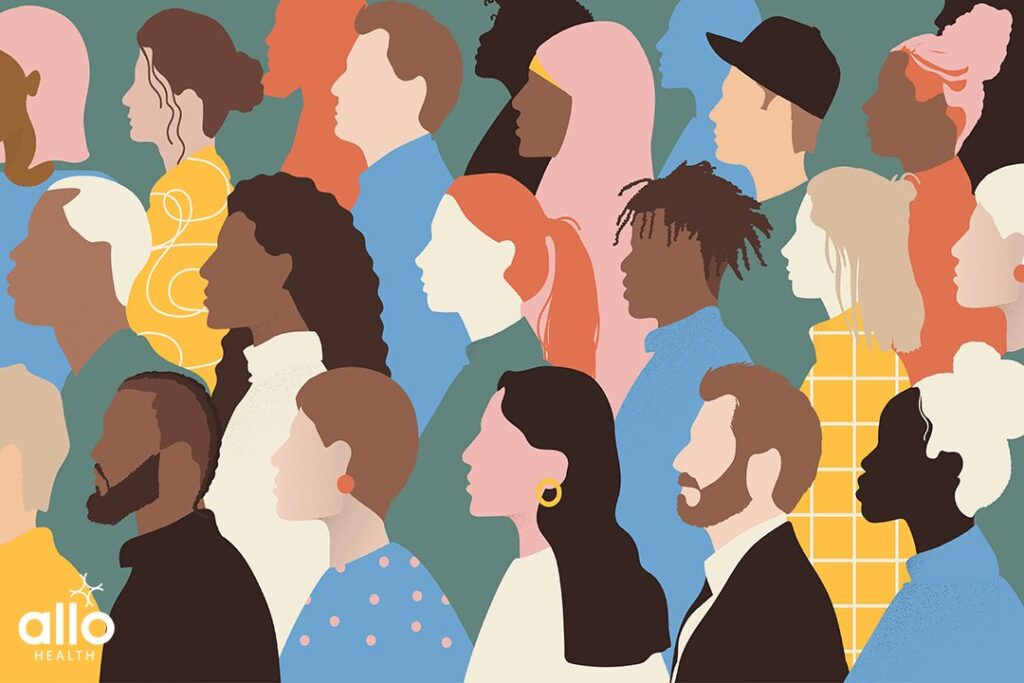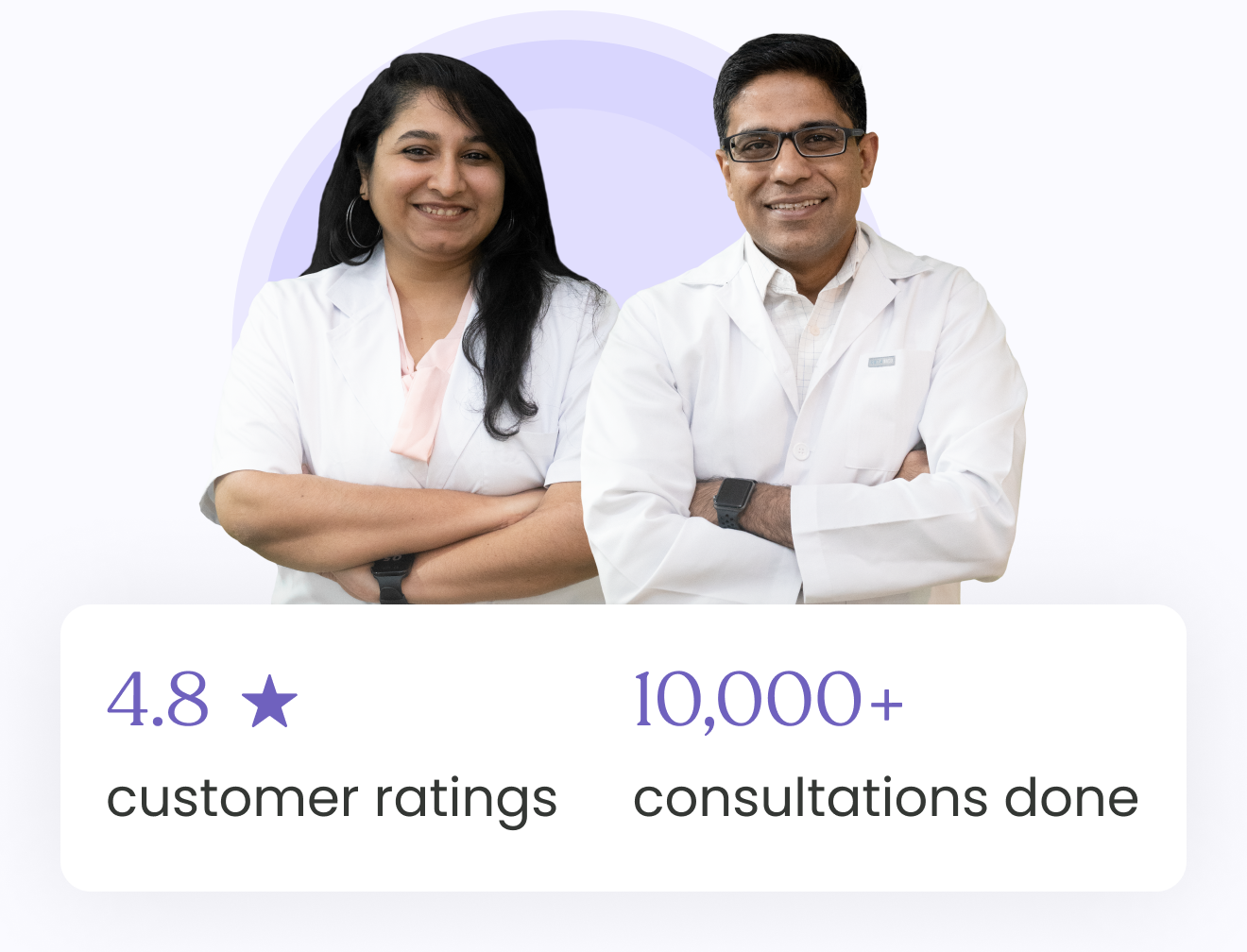What Is Sexual Orientation?

Allo Health is dedicated to personalized well-being, offering support and trusted information tailored to individual health goals. The platform emphasizes human-generated content, led by a distinguished medical team of experts, including physicians and sexual health specialists. Their commitment to credibility involves rigorous fact-checking, authoritative research, and continuous updates to ensure accurate, up-to-date information. Allo Health's unique approach goes beyond conventional platforms, providing expert-led insights and a continuous commitment to excellence, with user feedback playing a crucial role in shaping the platform's authoritative voice.

A Psychotherapist with Clinical specialization, working for over seven years now. Areas of specialization range from Anxiety-related disorders, Mood-related disorders, Personality disorders, Sexual dysfunctions & other mental health issues.
Why This Was Upated?
Our experts continually monitor the health and wellness space, and we update our articles when new information became available.
Updated on 17 April, 2024
- Article was updated as part of our commitment to diversity, equity, and inclusion.

"The following blog article provides general information and insights on various topics. However, it is important to note that the information presented is not intended as professional advice in any specific field or area. The content of this blog is for general educational and informational purposes only.
Book consultation
The content should not be interpreted as endorsement, recommendation, or guarantee of any product, service, or information mentioned. Readers are solely responsible for the decisions and actions they take based on the information provided in this blog. It is essential to exercise individual judgment, critical thinking, and personal responsibility when applying or implementing any information or suggestions discussed in the blog."
The time when choosing between being homosexual or ‘straight’ (heterosexual) is the only option is long gone. New sexual orientations have been identified over time, assisting individuals in understanding their true selves in light of their sexual preferences. So trust us when we say at least 15 of them, and after reading more about them, you’ll probably discover something new about your sexual preferences. Ready to learn more? Learn more by reading on.
In this article, we define a few sexual orientations and talk about what sexuality is.
Sexual Orientation vs Sexual Identity: What Is the Difference?
Sexual orientation refers to an individual’s emotional, romantic, and/or sexual attraction to others. Common sexual orientations include heterosexual (attracted to people of the opposite sex), homosexual (attracted to people of the same sex), bisexual (attracted to people of both sexes), and asexual (not attracted to anyone).
Sexual identity refers to an individual’s self-perception of their sexual orientation and/or gender identity. It encompasses a person’s sense of themselves in relation to their sexual attraction, behaviour, and/or self-expression. It is the label that a person chooses for themselves to describe their sexual orientation.
For example, a person may be attracted to both men and women but choose to identify as gay or bisexual, or a person may be attracted to people of the same sex but choose to identify as straight.
Sexual Orientations You’re Probably Familiar With
The most commonly known and heard sexual orientations are heterosexuality, homosexuality, and bisexuality. Let’s have a brief run-through of what each of these is!
Heterosexuality
Given that it is regarded in many cultures as expected and in line with what nature intended, this sexual orientation is likely the most prevalent and well-accepted. Heterosexuality is the sexual attraction to people of the opposite sex.—men to women and vice versa.
Homosexuality
Homosexuality is the sexual attraction to people of the same sex. Someone who has an attraction toward individuals of the same sex as themselves is considered homosexual. Gay people are men who like other men, and lesbians are women who are attracted to other women. Finally, the idea that homosexuality is a sexual orientation with a sufficient number of adherents worldwide is becoming accepted.
Bisexuality
Bisexual people are drawn to both men and women. Bisexuality is the sexual attraction to both, persons of the same and different sexes. They occasionally engage in physical contact with both men and women simultaneously. They have both alternatives open, which does not imply that they are attracted to everyone.
Sexual Orientations That Are Rarely Talked About
While heterosexuality, homosexuality, and bisexuality are the most commonly known and discussed sexual orientations, there are many others that are rarely talked about. These include pansexuality, asexuality, demisexuality, and many more.
Pansexuality
This sexual orientation is characterized by an attraction to anyone, regardless of gender or sexual orientation. They are a continuation of bisexuality, but they go further because they are drawn to people irrespective of their gender identity. They consider themselves gender-blind regarding sexual attraction and are frequently referred to as homosexuals.
Asexuality
Asexual people do not experience sexual attraction, but they may still experience romantic attraction and/or have desires for intimacy and companionship. Asexuality is a sexual orientation that refers to a lack of sexual attraction to anyone.
Asexuality is not the same as celibacy, which is a choice to abstain from sexual activity. Asexuality is a distinct sexual orientation, and it’s important to recognize that it’s a valid and legitimate form of sexual expression. Although asexuality isn’t widespread, some well-known figures have adopted it, including physicist Isaac Newton.
Demisexuality
A demisexual individual only develops an emotional connection with someone before becoming attracted to them romantically or otherwise. Before becoming attracted to someone, one must first become emotionally attached to them. Demisexuals, by nature, frequently create long-lasting partnerships or, at the very least, start off looking for one.
Sapiosexuality
Sapiosexuals are attracted to people who they perceive to be intelligent, regardless of their physical appearance. Sapiosexuality is a sexual orientation that refers to a sexual attraction based on intelligence or the ability to think critically and creatively.
Polysexuality
A polysexual individual is more pansexual than bisexual. They fall somewhere in the middle since they tend to have sexual preferences for many different genders, but not all. While a pansexual person is gender-blind, a polysexual person is attracted to different genders, including transgender, genderqueer(individuals who do not conform to traditional gender identities or expressions), and more.
Graysexuality
Graysexuality (also known as grey-asexuality or gray-A) is a term used to describe individuals who experience sexual attraction infrequently or on a limited basis. They may experience sexual attraction only in certain circumstances or with certain people, or they may experience it so weakly that it is not a significant part of their life. Graysexual individuals may also identify as demisexual, which means they only experience sexual attraction after a strong emotional bond is formed.
Androsexuality
Androsexual people are attracted to men or people who they perceive as masculine, regardless of their gender identity. Androsexuality is a term that describes an individual’s sexual attraction to masculinity.
Gynosexuality
A gynosexual individual is drawn to women or people who exhibit great femininity. Additionally, there are situations when desire may be felt for men with feminine traits.
Pomosexuality
This is for persons who do not identify with any available mainstream sexuality labels. Pomosexuals do not want their sexual orientation to be classified by societal tags. Pomosexuality is a term that has been used to describe a sexual orientation or identity that rejects the notion of traditional binary distinctions between gender and sexuality
Skoliosexual
Skoliosexuality is a term that is used to describe a sexual attraction to non-binary individuals or those who identify as genderqueer or transgender. Transgender is an umbrella term used to describe individuals whose gender identity or expression differs from the sex they were assigned at birth. This can include individuals who identify as the opposite gender (trans men and trans women), as well as those who identify as non-binary or gender non-conforming.
Autosexual
Autosexuality is a term that has been used to describe a sexual attraction to oneself. It is not a widely recognized or accepted term in mainstream society or psychology, and it is not considered a sexual orientation. Additionally, some may use this term as a joke or as a way to express self-love, rather than as a serious description of their sexual identity.
These are the various forms of sexual orientation. As mentioned earlier, it is clear from the article that a person’s sexual orientation determines the types of people they find romantically and sexually attractive. People don’t always feel sexual and romantic attraction at the same time or to the same gender; sexual and romantic attraction can exist on a spectrum.
What Determines Your Sexuality?
Sexual orientation is determined by a combination of hormonal, environmental and genetic factors. Studies have suggested that a person’s sexual orientation is likely influenced by a combination of both biological and social factors, although the exact mechanisms are not yet fully understood. Some researchers believe that genetics may play a role, while others propose that social and cultural influences may also play a role.
An example of social and cultural factors influencing an individual’s sexual orientation is participating in same-sex sexual behavior in the absence of males/ females respectively, or sociosexual behavior (engaging in sexual behavior with different partners without the desire for emotional commitment) that could result in bisexual experiences for those who would otherwise identify as straight.
It is important to note that sexual orientation is a complex and multi-faceted aspect of human identity and that there is no one “cause” of sexual orientation.
If you have any concerns or want to know anything about sexual orientation, then feel free to book a session with Allo Health experts, to help receive reliable information in a completely judgement-free setting.







































